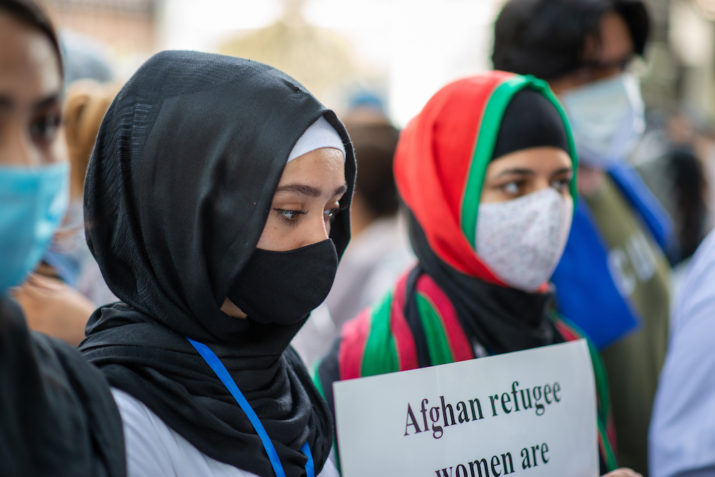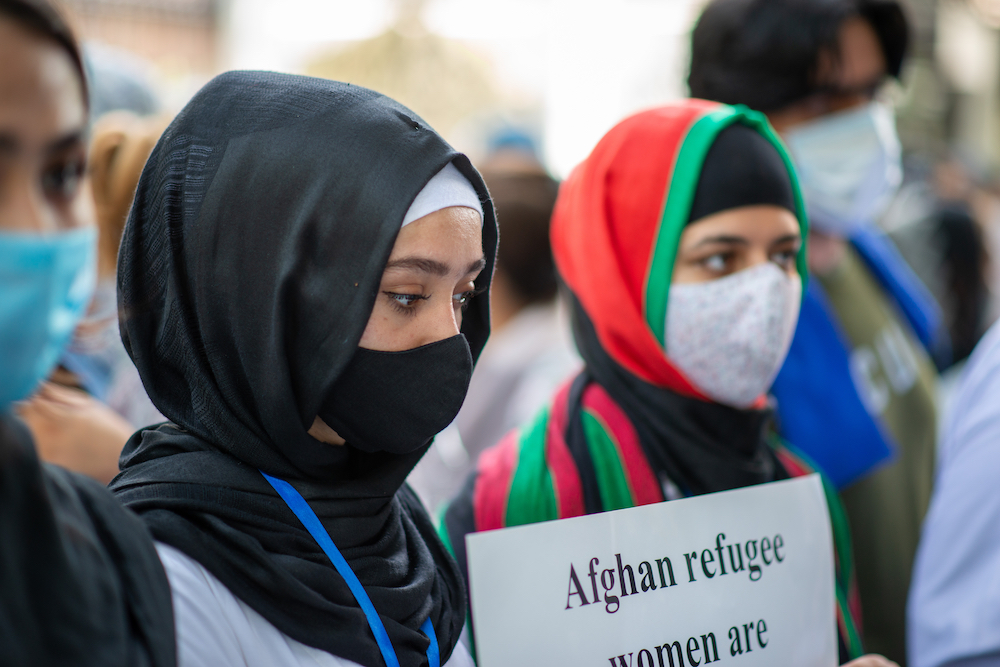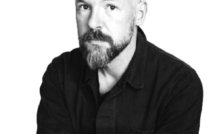

With continuous instability and violence engulfing Afghanistan, large numbers of Afghan women and girls are likely to reach Europe to seek protection from conflict and violence in their native land. However, absence of effective gender sensitive policies to address specific needs of women refugees and asylum seekers, juxtaposed with structural and institutional barriers and divisive politics in Europe, all may exacerbate the violence and insecurity for these women and girls. The EU has to not only strategize its geopolitical concerns but also initiate a gender responsive immigration policy that addresses the imminent needs and concerns for the anticipated newcomers.
The new regime sets in
In Afghanistan, a twenty-year war ended on August 15, when, without firing a shot, the Taliban captured Kabul, establishing a new regime―the Islamic Emirates of Afghanistan.[1] What followed was a series of melodramatic events where bearded mullahs with black turbans proclaimed to reshape the Afghan society and its people along the lines of Islamic rules. Panic ensued and violence grew. Dreadful images of panicked people scrambled to flee the country; some even clinging and falling off the plane midair.[2] Frequent attacks and killings of thousands of innocent lives, including women and children all have delineated the grim reality Afghanistan is confronted with at present. According to UNHCR,[3] the ongoing violence and insecurity in the country is likely to yield more suffering and internal displacement for thousands of Afghan civilians. According to the Afghanistan Independent Human Rights Commission, nearly a million Afghan people have already been displaced during 2021, as the number of people forced to flee continues to rise.[4] Afghan women and children make up around 70 percent of these displaced people (ibid): “families speak of having to flee at a moment’s notice, even when faced with the risk of improvised explosive devices and attacks by armed groups during their flight.”[5] In the midst of constant fear, unrest, and chaos, lives of women and girls become more vulnerable, making them desperate to flee to a safer place.[6] Is the West, particularly the EU, a safe destination for these vulnerable lives? What are the possible issues and challenges the women refugee migrants and asylum seekers may face in the destination countries in Europe? What strategic support is the EU required to initiate to tackle the imminent crisis?
Precariousness of women’s lives
Over the last two decades, lives of women and girls have been transformed considerably in Afghanistan, as we saw substantial numbers of Afghan women and girls attending schools, venturing out in public space for various work and occupations, becoming professionals, doctors, teachers, law makers, or public administrators, among various activities.[7] However, as it sets in, the new conservative regime holds a bleak future for Afghan women and girls as they find their lives trapped in violence and uncertainty. Indisputably, the past shows that women and young girls are fraught with difficulties and sufferings under Taliban rule and their imposed doctrine. The oppressive history of Taliban diktats displays how they constantly monitored, constrained, and controlled the lives of women and girls, curtailed their freedom of movement and expression of thoughts, and suppressed their right to education.[8] The recent “fatwa” issued by Taliban that seeks to ban co-education in government-sponsored and private universities―describing it as the “root of all evils in society”[9]―is illustrative of what women and girls have to endure under Taliban rule already. Under previous Taliban regime, cases of forced marriages, sex slavery, rape, honor killing, flogging, and stoning, as well as wide-scale corporal punishments were regular occurrences.[10] Moreover, women were publicly punished and executed for violating Islamic norms.[11] Today, there are apprehensions about history repeating itself, as the new regime expands its control over all the terrains of Afghan society and institutions.
This persistent fear and vulnerability has already been validated in the everyday lives of the people of Afghanistan. A woman was shot dead in Takhar province for not wearing a burqa just hours after the new regime took power.[12] Rampant cases of sexual violence, harassment in workplaces and in public, or forced marriages are constant in the country. According to a new study, “more than half of all Afghan women have experienced physical abuse, 17 percent reported sexual violence, while almost 60 percent reported that they were victims of forced marriages.[13] While these are not new occurrences, the Wall Street Journal indicates prevalence of sexual violence in the recent onslaught and features detailed narratives about Taliban commanders enacting decrees for communities to hand over unmarried women to make them into “wives” for their fighters.[14] Much of the progress that was accomplished over the years to protect Afghan women in a society that remains deeply entrenched in a misogynistic and patriarchal construct is likely to be rolled back under the Taliban tyrannous system, thus exacerbating the miseries of female citizens who constitute 48.7 percent of Afghanistan’s population.[15]
In search of a safe haven
In addition to institutional conflicts and violence, women are facing other enduring crises. Drought, hunger, unemployment, and the recent COVID-19 pandemic have crippled Afghanistan’s economy and social life, resulting into massive displacement of people in the country over recent years.[16] These ongoing crises and unstable and inhospitable situations are triggering many among vulnerable groups in Afghanistan, particularly women, young girls, and children from marginalized communities (Tajik, Hazara, Uzbek, Turkmen etc.)[17] to escape at any cost. For many political analysts, many of these Afghan people seemingly have moved towards neighboring regions in Iran and Pakistan due to proximity and family connections, whereas larger numbers are likely to head towards Europe in search of a safe and secure future.[18]
Albeit not all refugees, on January 2020, 23 million (5.1 percent) of the 447.3 million people living in the EU were non-EU citizens.[19] Strong pull factors are at play in these migration flows: the relative economic prosperity, diverse social and multicultural landscape, political stability, and EU’s safeguard mechanisms for protecting humanitarian values. Indeed, for decades, the EU has been deeply anchored in humanitarian and democratic values prompting it to build a system to manage and normalize migration. Reiterating these values, the President of the European Commission, Ursula von der Leyen, remarked in 2020:
We will take a humane approach. Saving lives at sea is not optional. And those countries who fulfil their legal and moral duties or are more exposed than others, must be able to rely on the solidarity of our whole European Union.
Because of its historical commitment to peace and security, the EU has long been sensitive towards safeguarding human rights and the harboring of refugees from conflict zones, and has absorbed large numbers of refugees over the years. At the end of 2019, the EU had already received around 2.6 million refugees, equivalent to 0.6 percent of the EU population.[20]
Although, globally, the share of female migrants has declined from 49.4 percent in 2000 to 48.1 percent in 2020 as against their male counterparts (50.6 percent in 2000 to 51.9 percent in 2020), they substantially comprise more than half of all international migrants in Europe and North America.[21] Whereas, migration is often presented as a masculine endeavor, at mid-year 2020, the share of females among all international migrants reached 51.6 percent in Europe, thus surpassing male’s share.[22] The EU has become one of the safest places for women migrants to go because of the strong democratic culture that has been nurtured there since the foundation of the union. As an example of this recent commitment, the Council of Europe’s Gender Equality Strategy 2018-2023 binds the EU not only to promote gender equality and women’s rights within its periphery, but also beyond, to protect the rights of women and girls’ migrants and refugees. The Council of Europe’s Convention on preventing and combatting violence against women and domestic violence (Istanbul Convention), the Guidelines on the Protection of Refugee Women, UNHCR’s Recommendations of Reception Standards for Asylum Seekers in the European Union, and the Guidance Note on Refugee Claims relating to Female Genital Mutilation constitute additional significant legal documents that serve a guiding framework for the EU to regulate its asylum policy and reception of refugees on the continent.[23]
Issues and challenges for women refugees in Europe
Both men and women partake in the process of migration and suffer various forms of violation of their rights through traumatic experiences not only in their country of origin, but also during the journey and after they reach the host country. However, women and young girls (as well as LGBTQ people) often go through the experience differently than men, as they are often involved in circumstances that are specific to their gender. Women and girls very often are confronted with precarious situations enroute for and upon arrival in European countries. For women migrants, elements of “special circumstances” or “vulnerability” remain key determining factor for claiming “refugee status” as they are perceived to be exposed to higher risk of gender-based violence, human trafficking, sexual abuse forced marriage etc.[24] However, as a construct, “vulnerability” often impedes the process of status determination for refugee women and asylum seekers. Inhibition of sharing the experience of prior trauma or gender-based violence due to cultural norms, language barriers or fear of being stigmatized as victims of gender-based violence primarily constraints the claiming status. Moreover, procedural delay in declaring status for women who arrived irregularly, combined with the lack of adequate interpretation services for interviews at asylum service stations also hinder the process of obtaining refugee status. Indeed, sometimes women do not feel comfortable to speak through particular interpreters, especially because of their gender or because the interpreters are being perceived to cover things up based on personal, religious, or traditional views. Therefore, the tag of “vulnerability” further diminishes the possibility of refugee status for single women and unaccompanied girls, especially when they do not hold documents or proofs of their identity and where they came from.
Upon arrival, the women refugees and asylum seekers must confront with inadequate facilities in overcrowded reception centers and refugee camps, such as underprovided healthcare and sanitation and inadequate psychological counselling for traumatized individuals to overcome their prior trauma or ongoing Gender Based Violence (GBV) experiences etc. These structural and institutional barriers in the countries of reception further push women into a vicious cycle of gender-based violence, exploitation, and abuse. A global study on the prevalence of sexual violence among refugee women reports that, “rape was the most reported form of sexual violence, with women as the main victims in all stages of the journey, and especially when still in the countries of origin. Sexual violence was perpetrated mostly by intimate partners, but also by supposed agents of protection.”[25]
The issues most challenging to women refugees and migrants when reaching their destination pertain to social, educational, linguistic, and labor market integration.[26] Female migrants and refugees face similar but often greater integration challenges than men. For example, men preferred in certain sectors like Information and Communication Technology. Insufficient formal channels for information about and access to employment and appropriate knowledge courses for newly arrived women migrants and refugees in host country, to a large extent create problems in gaining professional skills, desired education, and employment opportunities. The European Network of Migrant Women (ENOMW) confirms that barriers to accessing employment, legal status, limited access to reporting and to justice and protection, limited knowledge of the local language and lack of social networks make migrant women particularly vulnerable to other forms of gender-based violence, including its extreme form—femicide.[27]
In the context of reception, the rise of far-right regimes, Islamophobia, xenophobic propensities, racist intolerance particularly impacts the situation for Muslim women refugees in Europe as very often they become the target of unleashed violence and propaganda politics.[28] Frequently, veiled Muslim women are framed in the national discourse as “oppressed women” by populist governments projecting “Muslim women being everything that Europe is not and cannot be,” as spelled out by Sara Farris (2017) through her work on “femonationalism.”
With the 2015 Syrian crisis, the EU confronted resistance from its member states over controlling massive immigration and unauthorized arrivals and managing external borders. In the end, this pushback led to closure of borders in many European countries, which amplified the suffering and vulnerabilities of refugee women and made the journey riskier and unsafe for women and girls.[29] The growing efforts by antiliberal populist governments[30] to create a narrative that flares up “compassion deficit”[31] towards immigrants by reinforcing restrictive asylum policies and also seizing up political space that undermines democratic values in the EU, may constrain the EU from offering a safe destination for Muslim Afghan refugee women and young girls.
Absence of gender-responsive immigration policy
Despite existing legislation and institutional frameworks, the overall political will in the EU is not responsive enough to deal with pressing issues and challenges that women refugee migrants experience in everyday life once in European society. Substantial lack of coordinated efforts and gender-sensitive immigration policies, both at the national and EU level, continue to deteriorate the condition of women refugees in European society. For example, the Roma community―the most vulnerable of all refugee groups―often suffers discriminatory practices from most of the European governments in matters of basic facilities like housing, employment, education, and healthcare.[32]
The policy brief paper by the European Court of Auditors indicates that many EU Member States lack gender sensitive policies specifically addressing the needs of female migrants.[33] It reports that “out of the 32 responding governments (27 Members States, 4 Belgian regions and Norway), only 7 governments have initiated gender friendly policies for migrant women and girls.”[34] Another report, by the EU Fundamental Rights Agency (2018), also confirmed that across the EU, there is no substantial action plans and strategies that are directly focusing on gender issues or the specific needs and interests of migrant women in Europe.[35] “Gender” as a policy problem often gets sidelined within the mainstream European policy discourse and is often co-opted with other priority concern like monetary and security issues. As such European immigration policy does not fully integrate women’s human rights’ agenda as an independent matter. Rather, it absorbs gender issues within the broader framework of security and border control rendering immigration policies more generic and gender neutral.
The reality of the mass arrivals of women refugees and migrants in the wake of the current Afghan crisis, raises a number of issues pertaining to resettlement and reception policies in Europe. To live up to its humanitarian goals and commitment towards gender equality, the EU needs to revisit its immigrant and asylum policies towards an inclusive gender sensitive immigration policy that addresses the specific needs and concerns of women refugees and migrants.[36]
The EU’s dilemma
The EU appears trapped between multiple concerns, from coping with relentless pressure from its member states to secure borders, to meeting wider geopolitical concerns and living up to its inherent humanitarian and democratic values. While all facets of Europe’s work on the refugee question are important, the EU has to prioritize and organize its actions carefully, as well as their implications for women. Fearing a repeat of the 2015 “refugee crisis,” several influential EU countries, (Germany, Austria, Belgium, and the Netherlands) have put a halt to their evacuation plans in Afghanistan[37] and have already denied entry for Afghan refugees through their borders.[38] Although von der Leyen promised to extend humanitarian aid for the country, amounting to 57 million Euros for 2021,[39] and announced EU cooperation with the UNHCR[40] for resettlement operations for Afghan refugees in Europe, only time will reveal the plan’s effectiveness.
Manasi Sinha (Ph.D. JNU) is an Assistant Professor in Political Science/International Studies at Galgotias University, India. She regularly writes on issues related to Gender, Culture and Politics (European/Indian), the EU and Contemporary Global Politics, among other topics.
References
[1] 2021. Afghanistan Crisis Highlights: Taliban to declare Islamic Emirate of Afghanistan from presidential palace in Kabul. August 18. Accessed September 13, 2021. https://www.financialexpress.com/defence/afghanistan-live-updates-afghanistan-crisis-live-taliban-live-news-ashraf-ghani-latest-afghanistan-news-latest-kabul-kandahar-latest/2310843/.
[2] Gangitano, Alex. 2021. www.thehill.com. August 16. Accessed Aug 28, 2021. https://thehill.com/policy/defense/568040-watch-five-dramatic-moments-in-afghanistans-chaotic-collapse.
[3] 2021. www.indiatoday.in. August 16. Accessed August 29, 2021. https://www.indiatoday.in/world/story/un-report-half-a-million-afghans-women-and-children-flee-afghanistan-due-to-violence-1846714-2021-08-29.
[4] Pirzad, Zainab, Atefa Alizada, and Rubaba Rezai. 2021. www.theguardian.com. August 12. Accessed August 21, 2021. https://www.theguardian.com/global-development/2021/aug/12/i-worry-my-daughters-will-never-know-peace-women-flee-the-taliban-again-afghanistan.
[5] Ibid
[6] Kermani, Secunder. 2021. www.bbc.com. August 20. Accessed August 23, 2021. https://www.bbc.com/news/world-asia-58286000.
[7] Bukhari, Allia. 2021. www.thediplomat.com. August 17. Accessed August 22, 2021. https://thediplomat.com/2021/08/talibans-return-has-afghan-women-living-in-fear/.
[8] 2021. www.timesofindia.indiatimes.com. August 20. Accessed August 22, 2021. https://timesofindia.indiatimes.com/world/south-asia/taliban-in-afghanistan-what-is-sharia-law-and-what-it-means-for-women/articleshow/85488872.cms.
[9] 2021. www.livemint.com. August 21. Accessed August 22, 2021. https://www.livemint.com/news/world/taliban-bans-co-education-in-afghanistan-s-herat-province-report-11629543264399.html.
[10] Shah, Saeed. 2021. www.wsj.com. August 12. Accessed August 20, 2021. https://www.wsj.com/articles/afghans-tell-of-executions-forced-marriages-in-taliban-held-areas-11628780820.
[11] 2021. www.timesofindia.indiatimes.com. August 20. Accessed August 22, 2021. https://timesofindia.indiatimes.com/world/south-asia/taliban-in-afghanistan-what-is-sharia-law-and-what-it-means-for-women/articleshow/85488872.cms.
[12] Bhattacharya, Sanchita. 2021. www.eastasiaforum.org. September 4. Accessed September 8, 2021. https://www.eastasiaforum.org/2021/09/04/no-good-future-for-afghan-women-under-the-taliban/.
[13] Ministry of Women’s Affairs. 2016. Strategy and national action plan on the elemination of violence against women 2016-2020. Government Report, Kabul: Government of Islamic Republic of Afghanistan. Accessed August 25, 2021. aco_evawstrategy_jan17_email-r2.pdf (unwomen.org).
[14] —. 2021. www.wsj.com. August 12. Accessed August 21, 2021. https://www.wsj.com/articles/afghans-tell-of-executions-forced-marriages-in-taliban-held-areas-11628780820.
[15] 2019. www.data.worldbank.org. Accessed August 25, 2021. https://data.worldbank.org/indicator/SP.POP.TOTL.FE.ZS?locations=AF.
[16] Ghai, Rajat. 2021. www.downtoearth.org.in. August 16. Accessed August 23, 2021. https://www.downtoearth.org.in/news/governance/taliban-take-over-afghanistan-already-battling-drought-hunger-covid-19-78475.
[17] n.d. World Directory of Minorities and Indigenous Peoples. Accessed August 22, 2021. https://minorityrights.org/country/afghanistan/.
[18] Maizland, Lindsay. 2021. Where Will Afghan Refugees Go? September 8. Accessed September 9, 2021. https://www.cfr.org/in-brief/where-will-afghan-refugees-go.
[19] 2020. Communication from the Commission to the European Parliament, The Council, The European Economic and Social Committee and the Committee of the Regions on a New Pact on Migration and Asylum. Official Report, Brussels: European Commission. https://ec.europa.eu/info/sites/default/files/1_en_act_part1_v7_1.pdf.
[20] 2021. Migration and migrant population statistic. March. Accessed August 22, 2021. https://ec.europa.eu/eurostat/statistics-explained/index.php?title=Migration_and_migrant_population_statistics.
[21] 2021. Migration data portal: The Bigger Picture. March 11. Accessed August 25, 2021. https://www.migrationdataportal.org/themes/gender-and-migration.
[22] Ibid
[23] Bonewit, Anne. 2016. Reception of female refugees and asylum seekers in the EU Case study Germany. Study, Brussels: Directorate general for internal policies, policy department c: citizens’ rights and constitutional affairs, European Parliament. https://www.europarl.europa.eu/RegData/etudes/STUD/2016/536497/IPOL_STU(2016)536497_EN.pdf.
[24] Davaki, Konstantina. 2021. The traumas endured by refugee women and their consequences for integration and participation in the EU host country. Study, Brussels: Policy Department for Citizens’ Rights and Constitutional Affairs, Directorate-General for Internal Policies, European Parliament. https://rm.coe.int/ipol-stu-2021-691875-en-1-/1680a23902.
[25] 2021. Migration data portal: The Bigger Picture. March 11. Accessed August 25, 2021. https://www.migrationdataportal.org/themes/gender-and-migration.
[26] 2017. Together in the EU: Promoting the participation of migrants and their descendants. Official Report, Luxembourg: FRA: European Union Agency for Fundamental Rights. https://fra.europa.eu/sites/default/files/fra_uploads/fra-2017-together-in-the-eu_en.pdf.
[27] 2021. Migration data portal: The Bigger Picture. March 11. Accessed August 25, 2021. https://www.migrationdataportal.org/themes/gender-and-migration
[28] 2018. The integration of migrants from outside the EU. Briefing Paper, European Court of Auditors. Accessed August 25, 2021. https://www.eca.europa.eu/Lists/ECADocuments/Briefing_paper_Integration_migrants/Briefing_paper_Integration_migrants_EN.pdf.
[29] Braw, Elisabeth. 2021. Biden Sparked a Refugee Crisis. He Must Help Europe Bear the Cost. August 19. Accessed August 21, 2021. https://foreignpolicy.com.elibrary.ashoka.edu.in/2021/08/19/biden-afghan-refugee-crisis-help-europe-bear-cost/.
[30] Browne, Matt, Dalibor Rohac, and Carolyn Kenney. 2018. Europe’s Populist Challenge. May 10. Accessed August 24, 2021. https://www.americanprogress.org/issues/democracy/reports/2018/05/10/450430/europes-populist-challenge/.
[31] Rosca, Matei. 2021. EU to boost Afghan humanitarian aid, press G7 on refugee resettlement. August 21. Accessed August 25, 2021. https://www.politico.eu/article/eu-to-call-on-g7-for-global-effort-to-take-afghan-refugees-taliban-afghanistan/?utm_source=POLITICO.EU&utm_campaign=f56c23f62f-EMAIL_CAMPAIGN_2021_08_23_04_27&utm_medium=email&utm_term=0_10959edeb5-f56c23f62f-190591327.
[32] Leyen, Ursula von der, and Charles Michel. 2021. Press conference by Presidents Michel and von der Leyen following the G7 leaders’ meeting on Afghanistan via video conference European Council. August 24. Accessed August 27, 2021. https://video.consilium.europa.eu/event/en/24822?audio_language=or.
[33] 2018. The integration of migrants from outside the EU. Briefing Paper, European Court of Auditors. Accessed August 25, 2021.
[34] Ibid
[35] 2019. European Union Events of 2019. December. Accessed September 23, 2021. https://www.hrw.org/world-report/2020/country-chapters/european-union#.
[36] 2018. The EU Mutual Learning Programme in Gender Equality: Support services for victims of violence in asylum and migration. Summary Report, Greece: OSb Counsulting. https://ec.europa.eu/info/sites/default/files/summary_report_el_2018_en.pdf.
[37] Braw, Elisabeth. 2021. Biden Sparked a Refugee Crisis. He Must Help Europe Bear the Cost. August 19. Accessed August 21, 2021. https://foreignpolicy.com.elibrary.ashoka.edu.in/2021/08/19/biden-afghan-refugee-crisis-help-europe-bear-cost/.
[38] 2019. European Union Events of 2019. December. Accessed September 23, 2021. https://www.hrw.org/world-report/2020/country-chapters/european-union#.
[39] Rosca, Matei. 2021. EU to boost Afghan humanitarian aid, press G7 on refugee resettlement. August 21. Accessed August 25, 2021. https://www.politico.eu/article/eu-to-call-on-g7-for-global-effort-to-take-afghan-refugees-taliban-afghanistan/?utm_source=POLITICO.EU&utm_campaign=f56c23f62f-EMAIL_CAMPAIGN_2021_08_23_04_27&utm_medium=email&utm_term=0_10959edeb5-f56c23f62f-190591327.
[40] Leyen, Ursula von der, and Charles Michel. 2021. Press conference by Presidents Michel and von der Leyen following the G7 leaders’ meeting on Afghanistan via video conference European Council. August 24. Accessed August 27, 2021. https://video.consilium.europa.eu/event/en/24822?audio_language=or.
Photo: New Delhi, India-Aug 24 2021: A sad Afghan girls protesting outside UNHCR (United Nations High Commissioner for Refugees), demanding to be given refugee status in other country | Shutterstock




